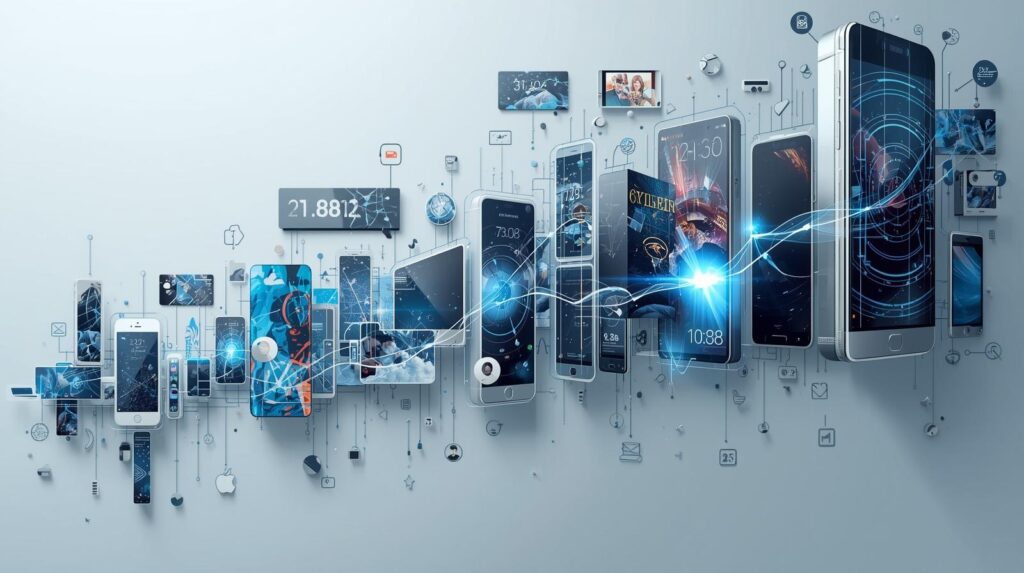In today’s digital age, touchscreens are ubiquitous. From smartphones to interactive kiosks, the ability to interact with devices through touch has transformed our interaction with technology. But how did we get here? Understanding the key milestones in touchscreen development history provides not only a fascinating glimpse into technological evolution but also insights into future innovations
The concept of touchscreen technology dates back to the 1960s. In 1965, E.A. Johnson, an engineer at the Royal Radar Establishment in the UK, is credited with inventing the first touchscreen. His work on capacitive touch technology laid the groundwork for future developments. Johnson’s model was used to control air traffic, illustrating early on the practical applications of touch interfaces in complex systems.
The First Resistive Touchscreen
The 1970s witnessed significant advancements in touchscreen technology. Dr. G. Samuel Hurst, an American physicist, invented the first resistive touchscreen in 1975. While conducting research at the University of Kentucky, Hurst developed a sensor that could register touch by measuring changes in electrical resistance. This technology became a cornerstone for future touchscreen applications due to its cost-effectiveness and versatility.
The 1980s: A Decade of Breakthroughs
The 1980s marked a pivotal period for touchscreens, with innovations that set the stage for consumer electronics. In 1982, the University of Toronto’s Input Research Group developed the first multitouch screen. This technology, capable of recognizing multiple points of contact, opened up new possibilities for user interaction.
The Emergence of Commercial Touchscreen Devices
Hewlett-Packard released the HP-150 in 1983, one of the earliest touchscreen computers. Although not a commercial success, the HP-150 highlighted the potential of touchscreens in personal computing. Around the same time, touchscreen technology found its way into ATMs and industrial applications, further showcasing its versatility.
The 1990s: Touchscreens Gain Traction
During the 1990s, touchscreens began to gain widespread acceptance. The introduction of Personal Digital Assistants (PDAs) brought touch technology into the hands of consumers. Devices like the Apple Newton and Palm Pilot featured resistive touchscreens, paving the way for more intuitive interfaces in mobile computing.
Advancements in Capacitive Technology
The late 1990s saw improvements in capacitive touch technology. Capacitive screens, which rely on the electrical properties of the human body to detect touch, offered higher clarity and durability compared to resistive screens. This advancement was crucial for the development of future mobile devices.
The 2000s: The Era of the Smartphone
The new millennium ushered in a touchscreen revolution with the advent of smartphones. In 2007, Apple introduced the iPhone, a landmark device that popularized capacitive touchscreens. The iPhone’s sleek design and intuitive interface set a new standard for mobile devices and accelerated the adoption of touchscreen technology across various platforms.
Touchscreens in Everyday Life
Following the iPhone’s success, touchscreens became integral to consumer electronics. Tablets, gaming consoles, and smart appliances adopted touch interfaces, transforming user experiences. The proliferation of touchscreens also spurred innovations in gesture recognition and haptic feedback, enhancing interactivity and user satisfaction.
Recent Developments and Future Directions

In recent years, touchscreen technology has continued to evolve. Flexible and transparent touchscreens are emerging, promising new applications in wearable tech and automotive interfaces. Additionally, advancements in AI and machine learning are enabling more sophisticated touch interactions, such as voice-activated commands and personalized user experiences.
The Role of Touchscreens in Industry 4.0
As industries embrace digital transformation, touchscreens play a critical role in the Fourth Industrial Revolution. In manufacturing, healthcare, and retail, touch interfaces facilitate efficient operations and improve customer engagement. The integration of touchscreens with IoT devices and smart systems is driving innovation and opening new avenues for growth.
Challenges and Considerations
While touchscreens offer numerous benefits, they also present challenges. Ensuring accessibility for all users, including those with disabilities, is essential. Moreover, privacy and security concerns must be addressed, particularly as touch interfaces become more prevalent in sensitive applications.
Balancing Innovation and Usability
As technology continues to advance, balancing innovation with usability remains a key consideration. Designing intuitive interfaces that enhance, rather than hinder, user experiences is crucial for the continued success of touchscreen technology.
Conclusion
The journey of touchscreen technology from its inception in the 1960s to its current status as a fundamental component of modern devices reflects the dynamic nature of technological innovation. By understanding these milestones, business leaders and technologists can better anticipate future trends and strategically leverage touchscreens to drive growth and innovation.
Touchscreens have not only reshaped how we interact with technology but also how industries operate, offering endless possibilities for those willing to explore their potential. As we look to the future, touch technology will undoubtedly continue to play a pivotal role in shaping the digital landscape.




